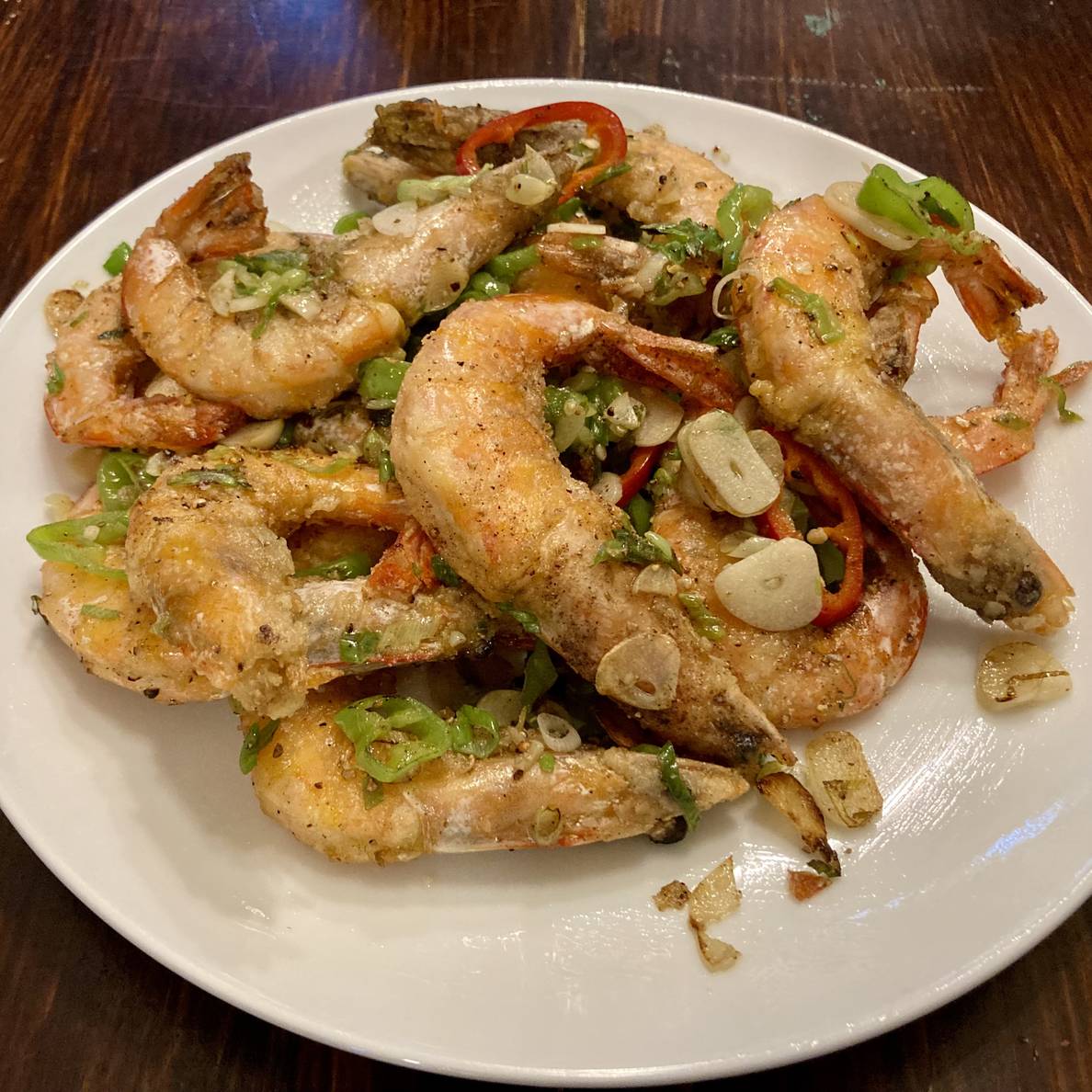Last week I made the Cantonese Pepper and Salty Shrimp recipe from J. Kenji Lopez-Alt’s The Wok cookbook. It’s similar to a salt and pepper tofu recipe that we love from The Woks of Life. Kenji’s shrimp version, however, was wild.
Kenji calls for a “large shell-on shrimp.” for this recipe. In his step-by-step instructions on prepping the shrimp, he notes
Cantonese pepper and salty shrimp is best made with whole shell-on shrimp. If you can find live shrimp with their heads intact, this is your best option. If you cannot find live shrimp, go for headless frozen shrimp.
I have never in my life seen live shrimp for sale. My coastal North Carolina mother has never seen live shrimp for sale. I had no idea where to find it (though a friend has since told me that Buford Highway Farmers Market has them).
Your DeKalb Farmers Market has frozen head-on shrimp. Where does this option fit in the preferred shrimp? They had two different sizes of frozen head-on shrimp from Australia and one from Alabama. Their largest headless frozen Atlantic shrimp (I prefer the flavor of Atlantic over Gulf. Credit my coastal North Carolina family.) were smaller than the Alabama head-on, so I went with the larger frozen head-on Alabama shrimp.
I have discussed with several friends about the noted preference here, and the general consensus is that Kenji wants the freshest shrimp possible, which of course would be live, and if they’re life then of course they will still have their heads.
Kenji says that these shrimp are meant to be eaten shell and all, which is another idea completely foreign to both my and my family’s experiences. For preparing, Kenji directs to butterfly the shrimp in their shell to increase the surface area as it fries. For head-on shrimp, that involves snipping the beak on the head, cutting off the legs, and then cutting the back of the shell from just behind the head to the tail segments.
The prepped shrimp are brined in salt and baking soda ice water and then boiled briefly. The shrimp our left to cool and then tossed with cornstarch. The cornstarch shrimp are fried until crispy and cooked, which doesn’t take long, and then set aside.
Aromatics, garlic, scallions, and hot green and red chiles, are briefly stir-fried. The shrimp get added alongside Kenji’s Dry-Roasted Salt and Pepper Blend, and it all gets tossed together.

Megan waited for me to try one with the shell before she tried any of them. I had hoped that the frying might help the shell crisp up to more of a crunch than an “I’m eating shrimp shell” feeling. And maybe it did a little (or a lot), but it still was definitely eating shrimp shell. Megan tried one like that and then peeled the rest of hers. I tried peeling, too, but something in the boil + fry made the shrimp stick to the shell like I’ve never encountered before when peeling raw or boiled shrimp. In the end, it was so much work to peel that I went back to eating the shell too. I would twist the head off and often most of the head meet stuck to the body, and then I would just eat the rest of, tail included in four or so bites. Megan never went back to eating the shell and ate less than she wanted just because of the work of peeling. I don’t know what the heads offered, flavor-wise, to the final dish.
The flavors were good, but the shell was a real drag on the experience. As it is, I wouldn’t make this again, but if I did, I would definitely get headless shrimp, and I would try doing the whole thing with them peeled. I imagine it would not end up as crunchy, but I think it would be more appetizing to our palates.
I am cooking my way through J. Kenji Lopez-Alt’s The Wok cookbook. Read more about it.
